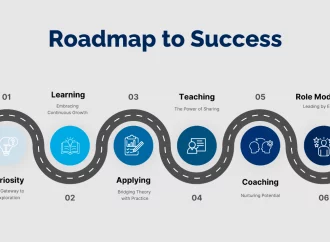As the debate over reproductive rights heats up across the country, one landmark Supreme Court case continues to serve as a touchstone for both sides of the argument: Roe v. Wade. Decided in 1973, this historic ruling legalized abortion nationwide and established a woman’s right to choose whether or not to have an abortion. But
As the debate over reproductive rights heats up across the country, one landmark Supreme Court case continues to serve as a touchstone for both sides of the argument: Roe v. Wade. Decided in 1973, this historic ruling legalized abortion nationwide and established a woman’s right to choose whether or not to have an abortion. But with new challenges emerging on multiple fronts, from state-level restrictions to potential changes at the federal level, it’s more important than ever to take a closer look at what Roe v. Wade means today and how we can navigate its uncertain future together. In this blog post, we’ll explore some of the key issues surrounding reproductive rights today and shed light on what lies ahead for women across America.
The History of Roe v. Wade
The future of Roe v. Wade, the landmark 1973 Supreme Court decision that legalized abortion nationwide, is uncertain. The current makeup of the court includes five conservative justices who have expressed skepticism about the ruling, and a new justice appointed by President Trump could tip the balance in favor of overturning it.
The Roe decision was based on the principle that a woman has a constitutional right to make her own decisions about her body and her health, without interference from the government. The ruling struck down state laws that prohibited or heavily restricted abortion, and it has been credited with helping to improve women’s health and safety by making abortions more safe and accessible.
However, opponents of Roe have long argued that the decision was wrongly decided and that it violates the rights of unborn children. In recent years, they have sought to chip away at its protections by enacting laws that impose restrictions on abortion access, such as mandatory waiting periods or bans on certain procedures like dilation and evacuation (D&E).
Now, with a conservative majority on the Supreme Court, there is a real possibility that Roe could be overturned or significantly weakened. This would have profound implications for women’s reproductive rights, as well as for their ability to access safe and legal abortions.
It is still unclear what will happen to Roe v. Wade in the coming years, but one thing is certain: the future of reproductive rights in America hangs in the balance.
The Current Status of Roe v. Wade
Forty years after the Roe v. Wade decision, abortion remains one of the most controversial issues in the United States. While the Supreme Court ruled that a woman has a right to privacy when making decisions about her body, many states have enacted laws that restrict access to abortion. The current status of Roe v. Wade is that it is still the law of the land, but its future is uncertain.
The Trump administration has made it clear that they would like to see Roe v. Wade overturned, and with two new justices on the Supreme Court, there is a real possibility that this could happen. If Roe v. Wade is overturned, it would mean that abortion would once again become illegal in many states. This would have a devastating impact on women’s health and lives. It is important to remember that while Roe v. Wade is still the law, there are many ways that states can make it difficult for women to access abortion services. We must remain vigilant and fight for our reproductive rights.
The Potential Future of Roe v. Wade
There is no question that Roe v. Wade has been under attack since its inception in 1973. In recent years, the attacks have only intensified, with more and more states passing laws that chip away at the protections afforded by Roe. With the confirmation of Brett Kavanaugh to the Supreme Court, many worry that the future of Roe is in jeopardy.
However, it’s important to remember that Roe is still the law of the land. While there are certainly challenges to its stability, it would take a major shift on the Supreme Court for Roe to be overturned outright. And even if that were to happen, there are still ways for reproductive rights to be protected.
For one, state legislatures could pass their own laws ensuring that women have access to safe and legal abortion services. This would ensure that even if Roe were to be overturned, women in those states would still have access to these vital services. Additionally, advocacy groups could work tirelessly to ensure that any rollback of reproductive rights does not go unnoticed or unchallenged.
The future of Roe may be uncertain, but there are still ways to protect reproductive rights even in a post-Roe world.
The Impact of Roe v. Wade on Women’s Rights
The Roe v. Wade decision has had a profound and lasting impact on women’s rights in the United States. The ruling established a woman’s right to privacy in reproductive decision-making, and set a precedent that has been used to strike down state laws that would restrict access to abortion.
The Roe v. Wade decision has also been credited with helping to spur the development of the modern women’s rights movement. In the years since the ruling, women have made significant gains in achieving equality with men in many areas of life. And while there is still much work to be done, Roe v. Wade remains an important milestone in the fight for gender equality.
The Impact of Roe v. Wade on the Pro-Choice Movement
The Roe v. Wade decision in 1973 was a turning point for the pro-choice movement in the United States. The ruling made it possible for women to get safe, legal abortions without having to go through illegal and dangerous means. This was a huge victory for the pro-choice movement, and it helped to legitimize their cause in the eyes of the public. Since then, the pro-choice movement has grown significantly, and it now has widespread support from both women and men. In recent years, there have been several challenges to Roe v. Wade, but so far the ruling has been upheld. This is thanks in large part to the work of pro-choice activists who have fought tirelessly to protect reproductive rights.
Conclusion
Roe v. Wade has been a landmark case, setting the groundwork for the debate surrounding reproductive rights. While there are still many questions to be answered and much progress to be made in terms of safeguarding women’s autonomy over their reproductive decisions, it is clear that Roe v. Wade will continue to serve as an important reference point in navigating this issue into the future. With continued efforts from both sides of the aisle, we can move forward with a shared respect for all individuals’ right to make decisions regarding their health and wellbeing without interference or judgement from outside sources.





















Leave a Comment
Your email address will not be published. Required fields are marked with *